Sawday Shares Significance of Nothingness at James Russell Lowell Prize Ceremony
01/16/2025
A lot can be said about the blank spaces in literature.
That was one of the messages from Jonathan Sawday, Ph.D., SLU’s Walter J. Ong, S.J. Chair in Humanities in the English Department. Wednesday afternoon, a standing-room-only crowd gathered in the Pere Marquette Gallery to hear Sawday’s thoughts on his award-winning text, Blanks, Print, Space, and Void in English Renaissance Literature: An Archaeology of Absence.
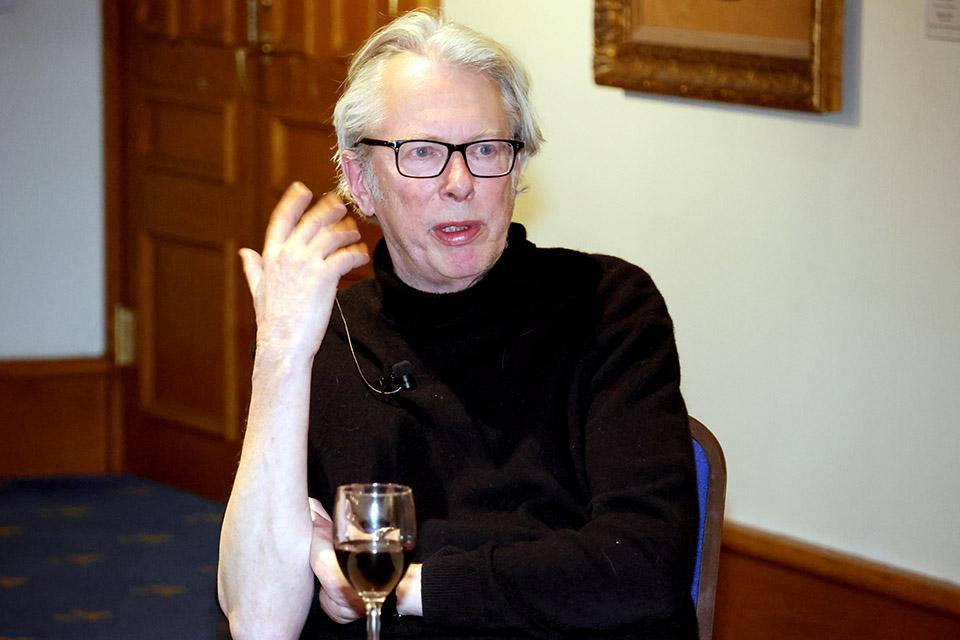
Jonathan Sawday, Ph.D., responds to a question during an event on Wednesday, Jan. 15. Photo by Joe Barker.
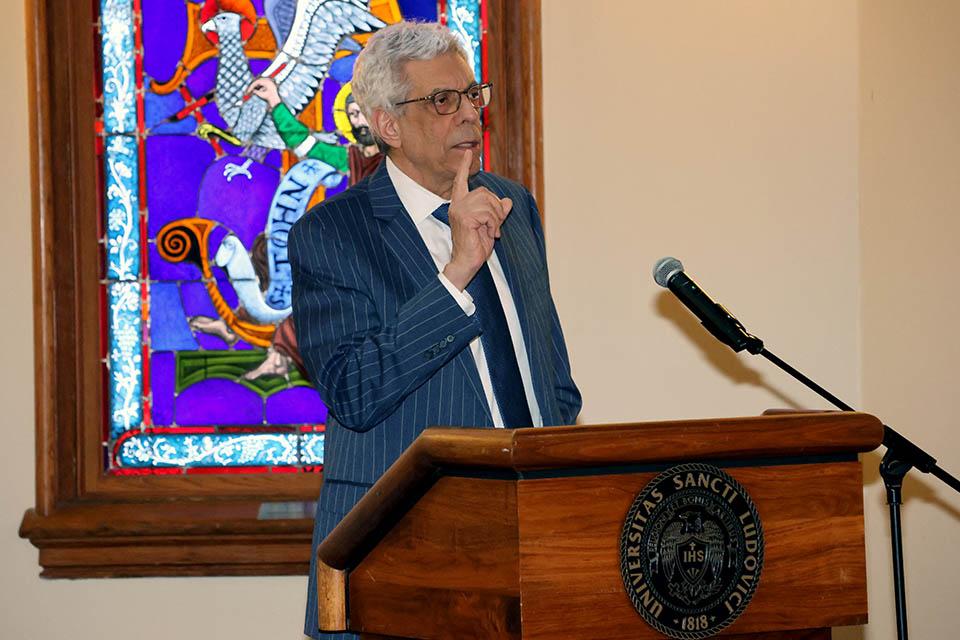
SLU President Fred P. Pestello, Ph.D., praised James Russell Lowell Prize awardee Jonathan Sawday, Ph.D., during an event Wednesday, Jan. 15. Photo by Joe Barker.
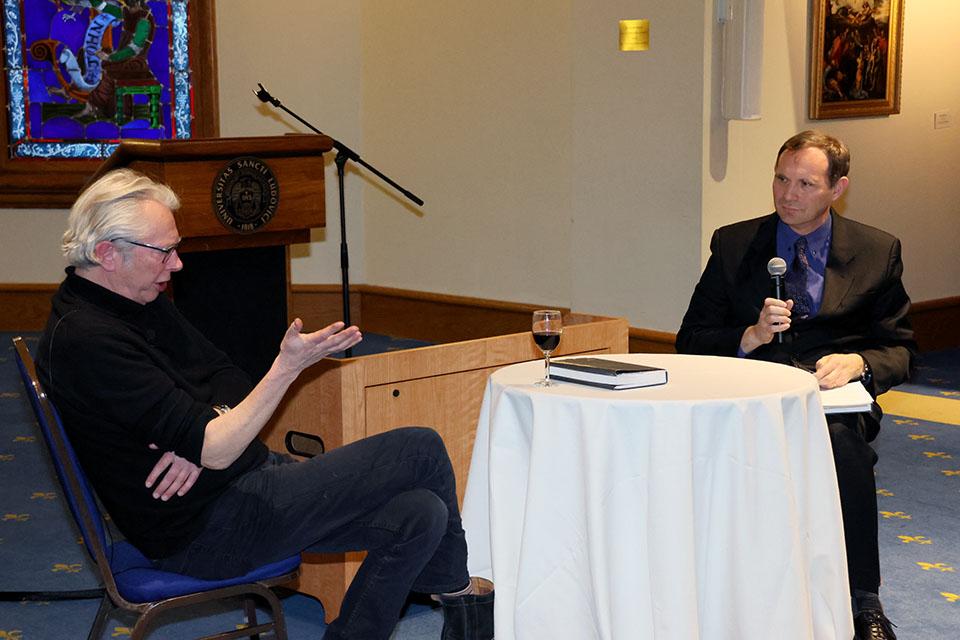
Jonathan Sawday, Ph.D., and chair of SLU's English Department, Brian Yothers, Ph.D., discuss Sawday's work at an event on Wednesday, Jan. 15. Photo by Joe Barker.
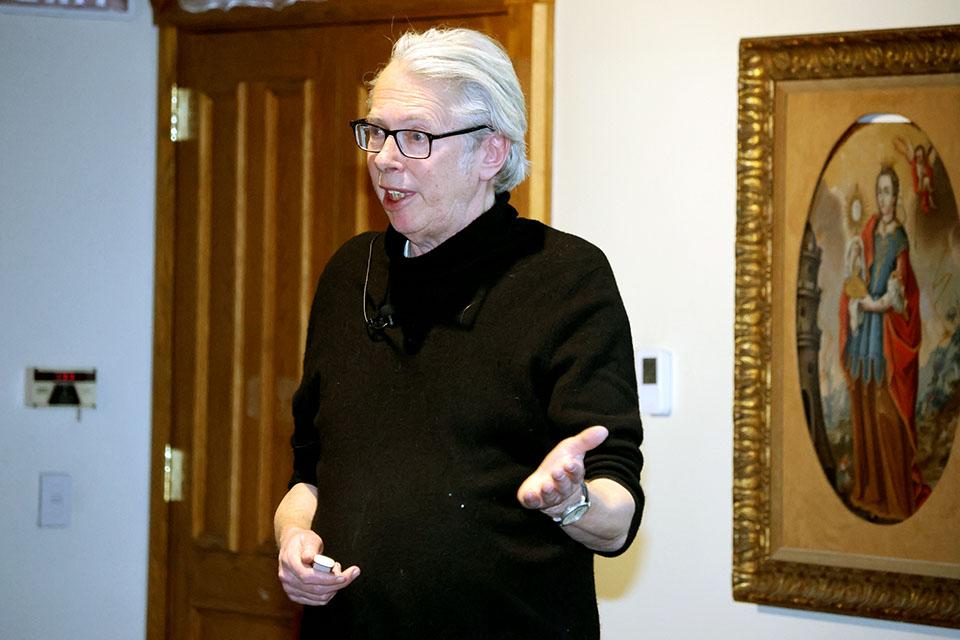
Jonathan Sawday, Ph.D., speaks at a reception on Wednesday, Jan. 15. Photo by Joe Barker.
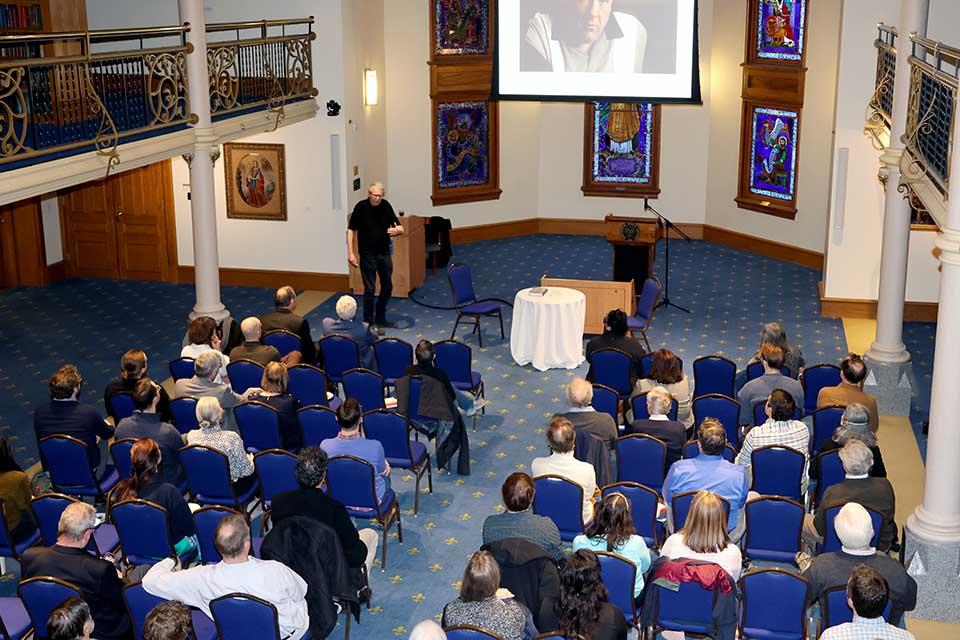
Jonathan Sawday, Ph.D., talked about his award-winning book, Blanks, Print, Space, and Void in English Renaissance Literature: An Archaeology of Absence, at an event on Wednesday, Jan. 15. Photo by Joe Barker.
The event was a celebration of Sawday’s recent reception of the James Russell Lowell Prize for the most outstanding book published in 2023, for his book published by Oxford University Press. The prize is the Modern Language Association’s (MLA) top honor and is awarded each year to an outstanding book that is a literary or linguistic study, a critical edition of an important work, or a critical biography written by a member of the association.
Sawday is the 55th recipient of the award, and the first from SLU to receive the honor.
“This is an extraordinary achievement,” said SLU President Fred P. Pestello, Ph.D. “Truly, this is something special. When Jonathan talks about this truly magnificent book, he often quips that he wrote 600 pages about nothing. It’s a very good line, but this achievement signifies quite a lot more than nothing.”
Sawday opened his remarks by talking about one of his inspirations for the project — the famous cut-to-black series finale of the TV show “The Sopranos.” Sawday talked about how that famous black screen, a void, actually said something.
“I was watching back in the U.K. and I thought it was just amazing,” Sawday said. “. . . It was tracing people’s response to this blackness that got me thinking there’s something interesting going on here, something worth writing about.”
Sawday noted that his book connects many aspects of contemporary culture with the advent of the transformative technology of print in the sixteenth and seventeenth centuries.
“It’s a book about history, a book about print history from the first age of print,” he said.
Blank spaces evolved over time. Sawday noted that the earliest printing was done without spaces between words — every word was just mashed together. This led to reading out loud. Once printers started separating words with spaces, silent reading began, some historians believe.
Blank spaces also could tell a story by themselves. In one example, Sawday showed an early map of North America with large swaths of empty spaces over the continent. He pointed out that this space was not blank — it was filled with wildlife, nature, and notably people. However, in trying to promote the new world to Europeans, map makers sold settlers visions of filling those voids.
“America is being shown as vacant, empty,” he said. “That sort of functions a bit like a vacuum. There is a political point being made — this place is empty, come here.”
Sawday connected things like modern tax forms to early documents. The modern printed “blank form,” devised with spaces that must be filled in by the user, and which first began to be issued in enormous numbers in the sixteenth century, is part of what the book calls the “rhetoric of the blank.”
Eventually, writers and poets started playing with the blank spaces. Sawday pointed to one example where an author used marks to mimic blood drops falling on a page.
“Those little spots on the page are a representation of blood, Christ’s blood, being imagined to fall on the page,” he said. “The reader is being drawn in through this manipulation of time and space.”
Sawday talked about censorship and also the connection between printing and race — he noted many modern ideas about “race” were shaped, in part, by the oscillation between black and white which was the product of the “inky” technology of print.
Sawday closed the celebration by taking questions from Brian Yothers, Ph.D., professor and chair of the Department of English at SLU, and members of the audience.
Sawday thanked the SLU community for making the book possible.
“This book is a very SLU book in the sense that so many of my colleagues helped me to write it,” Sawday said.
Latest Newslink
- SLU Partnership with St. Louis Catholic Academy Middle School Education Yields Improved Outcomes One Year OnA partnership between Saint Louis University's School of Education's Herrmann Center for Innovative Catholic Education and St. Louis Catholic Academy has yielded improved test scores and student outcomes in the middle school population after its first year. The SLU School of Education provides resources to St. Louis Catholic Academy's middle school.
- Saint Louis University Staff, Faculty Participate in Civil Rights Immersion TripSupported by the Office of Mission and Identity, Saint Louis University employees recently participated in a Civil Rights immersion trip. The group of nine, led by Patrick Cousins, pastoral formation director in Mission and Identity, took a road trip from SLU’s campus in St. Louis to sites in Tennessee, Alabama and Georgia after the spring semester ended.
- Saint Louis University Provides a Space for Religious Discernment to FlourishSaint Louis University provides an institutional framework to support men and women seeking religious vocations. Founded in 1889, SLU’s College of Philosophy and Letters oversees undergraduate and graduate programs oriented by the Jesuit commitment to intelligent service of faith and justice in dialogue with culture. The programs provide the philosophical and intellectual background needed for further studies in theology and ministry for future priests and nuns, as well as engaged laity within the Catholic Church.
- Helen De Cruz, Ph.D.: 1978-2025Helen De Cruz, Ph.D., the Danforth Chair in the Humanities at Saint Louis University, died Friday, June 20, 2025. She was 46. The Belgian-born philosopher examined why and how humans engage in pursuits that seem remote from the immediate concerns of survival and reproduction, such as theology, mathematics, and science.
- 'I am More Than Just a Refugee': A SLU Student Shares His StoryThe Saint Louis University-Jesuit Worldwide Learning (SLU-JWL) program offers remote bachelor's degrees to international students displaced by conflict, lack of opportunity, and poverty in places such as refugee camps in Kenya and Malawi. One student, Dictor Olame, reflected on his experience as a SLU student in the Kakuma refugee camp in North-Western Kenya.
- SLU Supports St. Louis by Hosting City's Tornado Relief CenterIn the weeks following a devastating tornado that tore through St. Louis on May 16, hundreds of households have turned to a centralized Disaster Assistance Center (DAC) at Chaifetz Arena for assistance.













